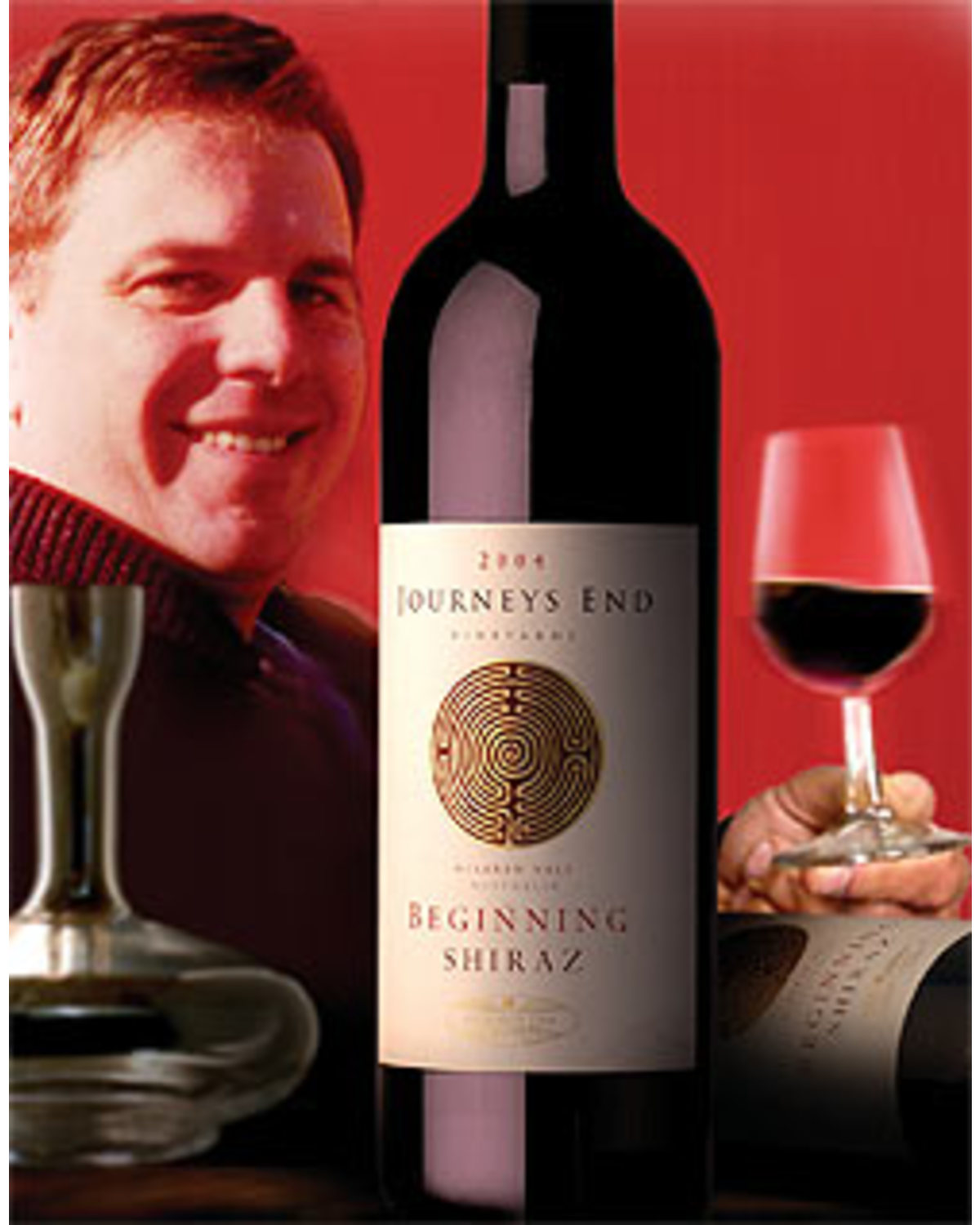
- 96
2004 Journeys End Vineyards The Beginning Shiraz
If one considers the physical process of what is going on in the decanter then the results are self evident. A bottle of wine will leave a good cellar at around 15°-16°C, and be brought into a room that is on average 21°C, this is the same room that the decanter is being stored in. Decanters are made of glass and have a large surface area exposed to the room, thus the glass more likely approaches the room temperature than that cooler bottle temperature. If you dipped your thermometer into the wine before and after decanting, you would find an instant temperature difference of around 2°C – the warmer wine liberating aroma molecules, this creating the sensation of altered smell – which is correct, but not due to air contact. However, when it comes to older wines, decanting makes sense particularly for the need to remove excessive deposits in the wine which have developed during the aging process. This will also depend on the quality of wine on hand. Many commercial wines are stabilized prior to bottling and filtered fine, so that the likelihood of much sediment appearing is minimal, where as handcrafted wines are only coarse filtered, and some may even not be filtered – particularly Pinot Noir where the retention of flavour and body is paramount.
Old bottles should by brought up from the cellar 48 hours prior to being opened and left standing in the room where they will be served. The wine should be opened only at the last minute prior to serving. A sharp pointed corkscrew with a good worm is mandatory as the cork could be soft – a very careful vertical action is required, both for the insertion and extraction of the cork. Any sediment will have collected around the punt of the bottle and a careful pour is required. Candles used to be the order of the day however, they leave the room full of the smell of matches and candle wax. A small lamp or torch is much more desirable, and a careful eye needed to follow the sediment trail up the bottle. Once decanted, old wines may only have a very small window of opportunity to by enjoyed, so don’t wait around for hours, enjoy the wine, and allow it to blossom in the glass.
Decanting the 2004 Journeys End Beginning Shiraz will certainly liberate more molecules. The wine has now been bottled for four months and has evolved beautifully but is still a baby. "...white and black pepper over layers of blackberry, plum and cedar...another flavour packed Shiraz reflective of the outstanding vintage conditions in 2004."
TASTING NOTE: This is the third release of Journeys End Beginning Shiraz and continues the tradition of maximising complexity by using five different clones of Shiraz. (These include SA1654, SA2626, SA1127, SA712 & BVRC30.) Winemaker, Ben Riggs (pictured above) has produced another flavour packed Shiraz reflective of the outstanding vintage conditions in 2004. Opaque black crimson colour with black purple hue. Lifted nose of blackberry, plum, liquorice and cedar. The palate is explosive, with flavours of white and black pepper over layers of blackberry, plum and cedar. Perfect balance with outstanding length. Fine grained tannins – exceptionally long aftertaste of plum, black pepper and spice.
Cellar 5-8 years (2011-2014)
Alc/Vol: 14.5%

 Click here to read more about the McLaren Vale wine region.
Click here to read more about the McLaren Vale wine region.
to most of Australia
